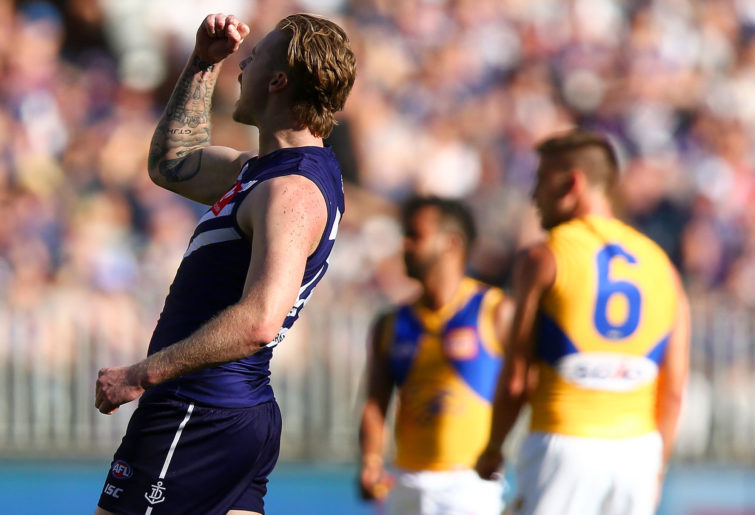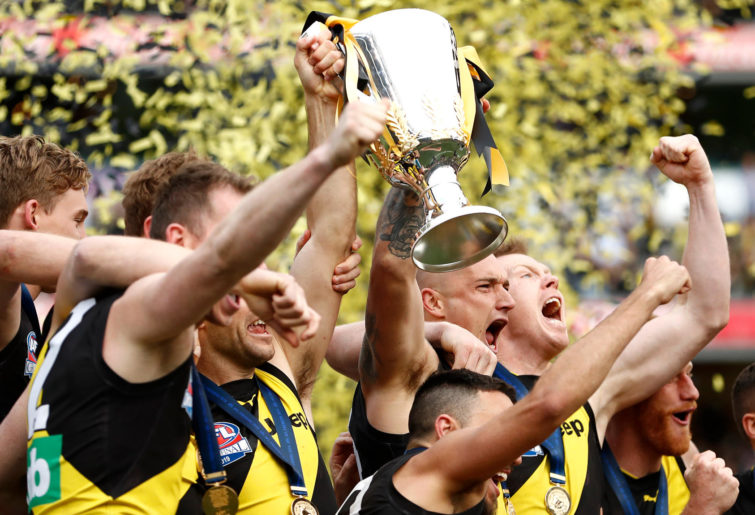Fairness of the fixture is brought up every year by supporters and quite possibly clubs behind closed doors.
I call it a fixture because that is what it is. Many games are guaranteed every year – Richmond versus Carlton in the opening round, Easter Monday with Geelong and Hawthorn, Anzac Day, Queen’s Birthday, two local derbies in WA, SA, Queensland and NSW. So it can never be called a draw.
Eighteen teams playing over 22 rounds, ten in Victoria and no more than two in any other state, it is not an easy thing to manage every year with the constraints given above and travel. Non-Victorian teams travel ten times a year (the other derby being an away game), Victorian teams only five to six times.
Not every team gets 11 home games on their home ground. It ranges from nine games to 16. Yes, this includes games that are played against co-tenants at the same ground as the MCG. Collingwood, Richmond, Melbourne and Hawthorn play their home games there. The get a huge advantage as well because of this.
Before you howl that the MCG is not their home ground, it is the ground that they play their home games on and therefore offers an advantage over the other clubs, particularly those from outside Victoria. Apart from the other tenants, they can play on the ground twice as much as any other team. In fact, Richmond and Collingwood do. And the only reason Hawthorn don’t play more is that they sell games to Tasmania.
According to Herald Sun stats, Richmond and Geelong have almost the same winning percentage at home, however Richmond have played 20 more games at home than Geelong over the same period (2017 to 2019). West Coast and Fremantle have only had 2018 and 2019 on Optus Stadium.
If it is rearranged to show the number of games on the team’s home ground, regardless of whether they are the away team, Collingwood and Richmond have a huge advantage over the other teams, with both Richmond and Collingwood playing twice as many games on their home ground than Carlton, and 20 games more than Geelong, Essendon and Fremantle. The next nearest team to Collingwood and Richmond is Adelaide and surprisingly St Kilda. Where is the fairness?

(Photo by Dylan Burns/AFL Photos)
It is becoming more apparent in recent years than previously. Eight teams have played less than 50 per cent of their games at their home ground. Yes, things go in cycles, but there are times that they are exacerbated.
Certain teams have a huge advantage over others. This is especially enhanced when you get to the non-Victorian teams and their lack of exposure to the ground that hosts the grand final.
Home finals are earned from the performance throughout the season. This does have an impact on the way the final eight is formed from a Victorian viewpoint at least. The ground that the final is played on has conveniently changed to the home state to suit AFL purposes, which again is a move to show that they are trying to be fair, but it is the home-state part that is confusing.
They are all about maximising attendances, even if it is detrimental to a team in terms of having to play an away home final. Consider Geelong. They must play a home-state game for finals, yet Gold Coast and GWS get to play on smaller grounds in their home state. One rule for some, another for others.
Richmond, Collingwood and Melbourne benefit the most as shown by the number of games they play on the MCG throughout the season. They play finals at the MCG even if they are the lower-ranked team if it is against another Victorian team.
Imagine the outcry if West Coast finished third, fourth, seventh or eighth and got a home final, unless Fremantle finished first, second, fifth or sixth. This then allows a team to manipulate the finals, which can have a major impact, just like Fremantle and North resting players in the last round, with that leading to the bye before the finals.
How can it be fairer?
One option is a rolling final five rounds to ensure that after four years every club plays each other twice – once at home and the other away.
Another is a rolling four rounds allowing local derbies to be played twice a season.
Another is playing 17 rounds only and alternating home-and-away between two teams.
Another is splitting into two conferences of nine. This allows for the addition of two other teams as well.
Rolling five rounds
Pay the first 17 rounds with no return matches, then a rolling five that continues on year after year.
Say Adelaide play, as an example, Brisbane, Carlton, Collingwood, Essendon and Fremantle in the first year, Geelong, Gold Coast, GWS, Hawthorn and Melbourne in the second, North, Port, Richmond, St Kilda and Sydney in the third and West Coast, Western Bulldogs, Brisbane, Carlton and Collingwood in the fourth.
This means that local derbies and other return matches are not guaranteed.
Rolling four rounds
This allows the derbies and other return matches against a team to be played, maybe the biggest rival. For example, the rivalries could be West Coast-Fremantle, Adelaide-Port, Sydney-GWS, Brisbane-Gold Coast, Carlton-Richmond, Essendon-Collingwood, Hawthorn-Geelong, Melbourne-North Melbourne and St Kilda-Western Bulldogs.

(Photo by Paul Kane/Getty Images)
Then the last four rounds are rolling. Of course, then Adelaide couldn’t play Port three times in a year so it would roll through the other 16 teams.
For example, Adelaide would play Brisbane, Carlton, Collingwood and Essendon in the first year, Fremantle, Geelong, Gold Coast and GWS in the second, Hawthorn, Melbourne, North and Richmond in the third, then St Kilda, Sydney, West Coast and the Dogs in the fourth.
Seventeen rounds only
Yes, it means less football, but teams only play each other once. This removes the possibility of a team playing a low team twice in a season, which can be the difference in ladder positions with teams on the same points where one gets to play, say, Richmond twice and the other Gold Coast in recent seasons.
Home-and-away rotates. Hawthorn play West Coast at home, next time in Perth, then the MCG. This does, however, give a maximum of nine home games in a year and a minimum of eight away games.
Conferences
Split the teams into two lots of nine. This could be done a couple of ways.
Each conference could have a team in WA, SA, Queensland and NSW with five Victorian teams each.
WA, NSW and five Victorian teams in one, then SA, Queensland and five Victorian teams (considering travel) in the other.
Or the conferences could be based on finishes from the previous season and maybe that opens the possibility of play-offs to determine next year’s conference.
The key question is whether the AFL want fairness or financial return. With an uneven draw, isn’t it more important to be fair?

(Ryan Pierse/AFL Photos/via Getty Images)
What is a fair draw?
• 11 homes games at your home ground – yes, all teams, including Geelong
• Play all teams once before return games, so no double-ups until Round 18
• With the bye rounds, teams coming off a bye should play another team coming off a bye (at worst, when coming off a bye your next game should involve the least amount of travel, so staying in your state)
• If there are to be Rounds 18 to 23, one is the rival round, such as West Coast-Fremantle, Sydney-GWS, Brisbane-Gold Coast and Adelaide-Port, then the rest are rotated so that you play everyone twice through before you start again
• More games for the interstate teams at the MCG
• Finals played at the teams’ actual home ground, at least Weeks 1 and 2 and possibly Week 3
• Grand final is at the MCG
People will complain that Geelong has the best home advantage, so deal with it. And that Richmond, Collingwood, Melbourne and Hawthorn play against the co-tenants on the MCG, so it is not an advantage. Look at it again – at most that happens four times a year and in the case of Richmond and Collingwood they still get another ten games against non-tenants of the MCG.
This is still one more than Geelong. Those who rail against this need to consider that Geelong is not a suburb of Melbourne. They deserve 11 home games and home finals just as everyone else. Western Bulldogs should play home finals at Marvel and the same goes for Essendon, Carlton and St Kilda. At worst the home club should decide where they play their home final.
The AFL would allow this if they are about fairness as crowd size should have nothing to do with where the game is played. Otherwise, GWS should play at the SCG, Gold Coast at the Gabba and when the non-Victorian teams play the big teams, then they should automatically default to the MCG. The current option is only about a financial return for the AFL.
Ironically, in the long run, the AFL would possibly generate more money if the public and supporters understood fairness comes first.































































































